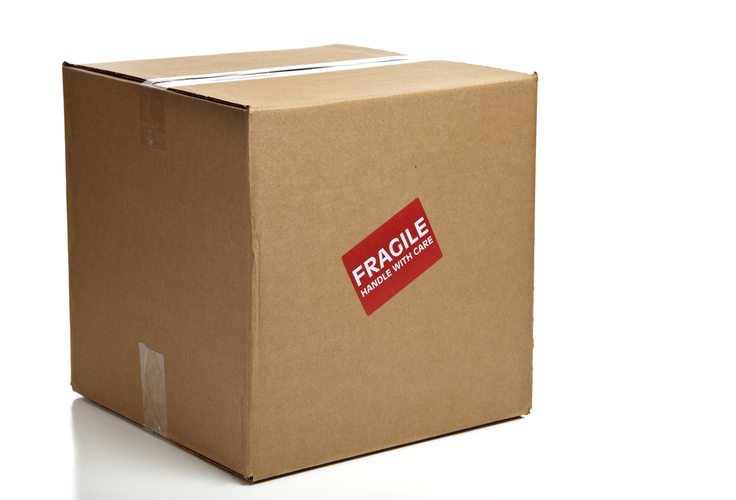Protecting fragile items from damage in transit is easier said than done. Most people have experienced the disappointment of opening a box, only to find their glassware or ceramic bowl has been shattered to pieces. When breakage occurs in, say, a $100,000 shipment of glassware or ceramic bowls, not only will a massively expensive return and replacement be required, but a customer relationship will be put in danger.
This article will discuss the basics of how to ship a fragile package and help prevent any and all of these problems.
Types of Packaging Materials Effective for Fragile Items
Heavy-duty protective packaging materials are abundantly available at GWC Packaging. Among the most important and popular are:
- Shipping boxes: Heavy-duty boxes, multiwall board construction, full overlap boxes and two-piece telescoping boxes resist punctures and improve stacking strength.
- Cushioning materials: Thick (1.8” and up) flexible polyethylene foam, ½” bubble packaging and inflatable airbags provide superior cushioning and hold fragile items in place.
- Box closure: Thick, heavy-duty box-sealing tapes with aggressive adhesives that resist weakening due to moisture and other environmental conditions are important for keeping fragile items where you want them — inside the box.
- Labels: “Fragile,” “Handle With Care,” “This Side Up” and other label messages help parcel handlers and receiving department personnel avoid inadvertently mishandling the box and causing damage.
- Unitization: Edge protectors, corner protectors and high-performance stretch film are designed to lock palletized loads firmly in place and are able to withstand shifting during a bumpy ride in a van, truck, railcar or container ship.
Tips for How to Package Fragile Items
Selecting fragile-friendly packaging materials such as the items listed above is the first step in securing delicate items — glassware, ceramics, dishes, sensitive electronic equipment, antiques, etc. Apply the following tips to put packaging materials to the most effective use.
- Allow about 3-4” of space inside the box, in all dimensions, so you can securely wrap the item with cushioning material. If you are packing multiple items, line the box with one or two layers of cushioning material, and then wrap each item individually.
- For items such as dishes, interleave between each item with bubble or foam packaging before wrapping them up. This prevents shifting, surface damage and breakage.
- Select a wide (3”) box-sealing tape to add strength to the closure, and lay down two strips of tape top and bottom, at least 4” down each side of the box. Make sure the tape is making 100% contact with the corrugated shipping box.
- Labels with “Fragile” wording such as the ones mentioned above are always a good idea — but don’t rely on just one label to convey the message. Put labels on the top of the box and two opposite sides, taking care not to obscure the address label.
- When stretch wrapping palletized units, make sure you are getting the greatest amount of stretch possible. Not only will this add holding force to the unit, but it will also save money on per-unit packaging costs.
- Labels with “Fragile” wording should be securely applied to stretch-wrapped units, again taking care not to obscure the address label and product identification markings.
- Consider the mode of transportation and overall shipping and handling conditions when deciding how much protective packaging you need. For instance, parcel shipments tend to be handled more roughly than neat, unitized loads tightly packed in a semi traveling over smooth interstate highways. However, if a unitized shipment is going to be traveling in a flatbed trailer across steep, winding and bumpy roads, more packaging protection is necessary.
Get Help!
GWC Packaging has a full line of high-quality fragile product packaging materials and equipment, as well as the experience you need for reliable recommendations on the best fragile packaging solution. For more information, or to get help with your application, please contact us now.
